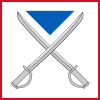This is a quick post about what I’ve been doing recently and what I’m going to do next.
First, I’ve provisionally finalised the data structures and page layouts, but feedback is still welcome (you can comment on the data structure documentation at Google docs).
The page layouts have changed a bit since the first launch of the wiki. The old ‘Semantic search’ heading has gone, and the links that were under it have been integrated into other sections, so for example everything about sources is under the ‘Sources’ heading, including the link to the query for linked sources. Now that I’ve had a chance to experiment with caches on the live wiki, I’ve found that it can be more efficient to embed query results and maps in a page, which also means you can see them without having to click a link.
Now that the data structures and page layouts are stable (for now) I can start importing batches of data. I’ve finished and tested the Python scripts for generating wiki XML files from CSV. These are based on what I did for Linking Experiences of World War One, but are simpler and more flexible.
The first successful import is a batch of authors. You can see from the authors category that there are now 54 pages for authors. All of these are linked to Wikidata IDs but most of them are not yet linked to editions of their works because I haven’t imported any books yet. Only three of these authors are women. The ratio will improve as I import more authors but it will still necessarily reflect the historical under-representation of women: although there are now lots of women publishing about the civil wars, the field used to be very male dominated. The first batch might look like an eccentric selection because my priorities for authors are based on two main factors:
- how much of their work is relevant to this project and has specific named entities as a main subject, or is otherwise particularly important for what I’m doing
- whether they already have a Wikidata ID
As well as building up more authors and books, early priorities for imports include:
- historical people who are subjects of published biographies
- battles and sieges
- places where battles and sieges happened
- armies that took part in battles and sieges
- historic counties of Great Britain
